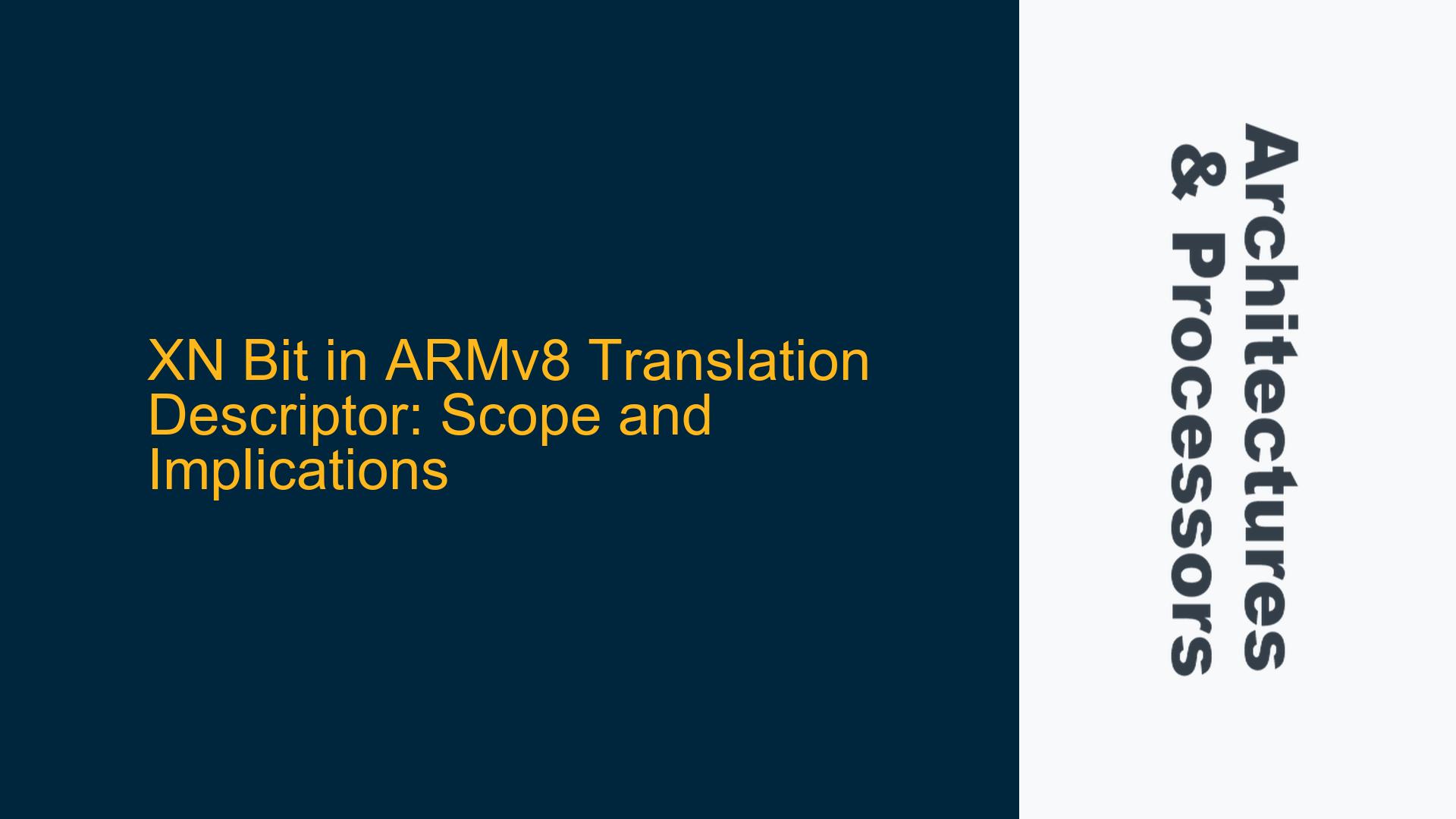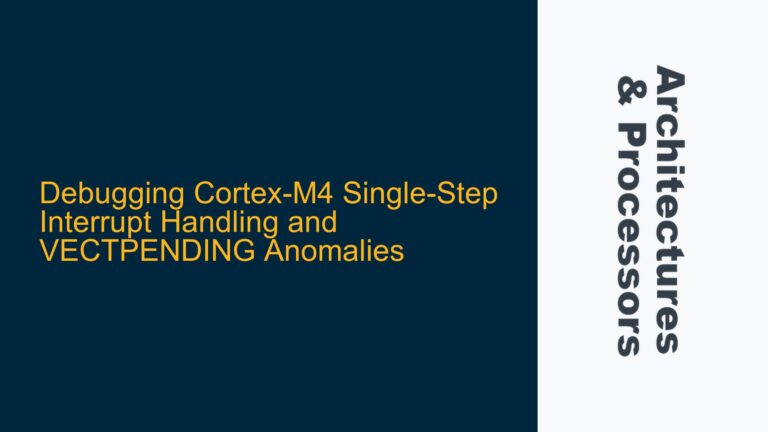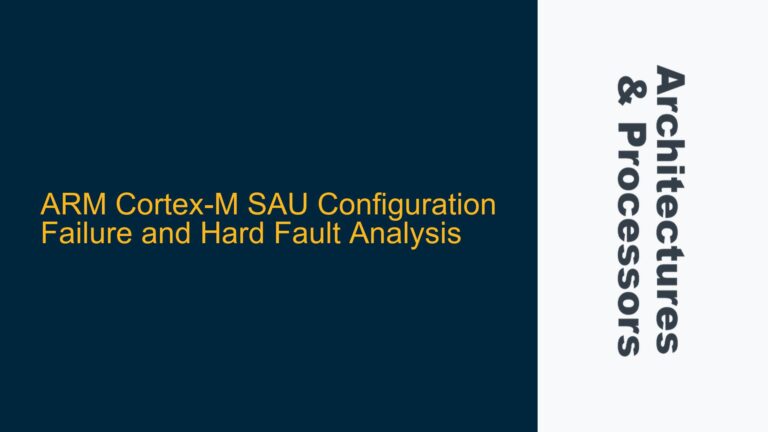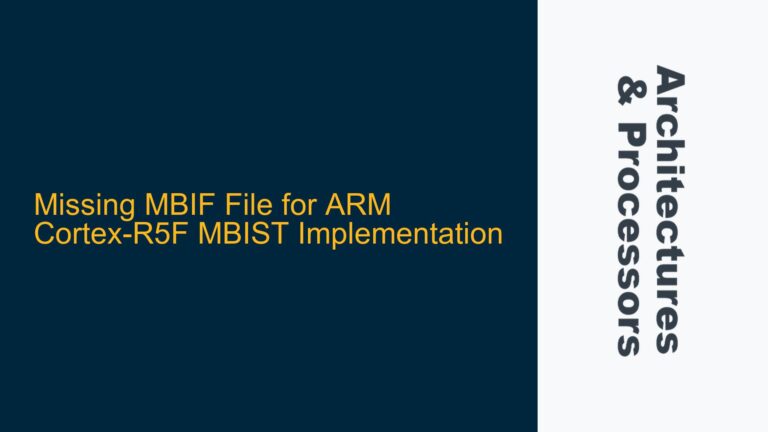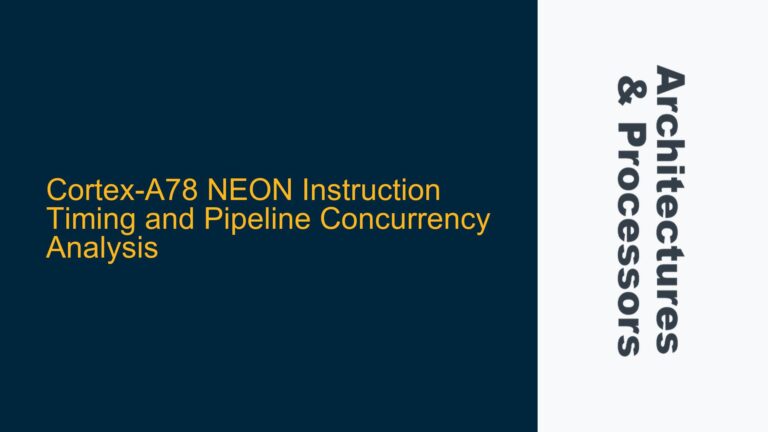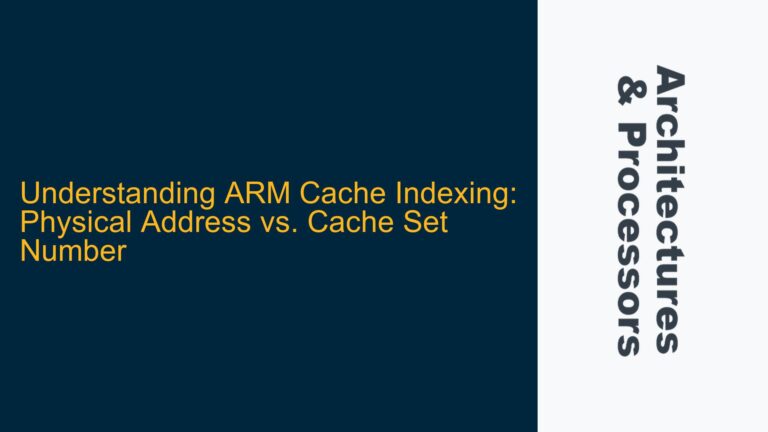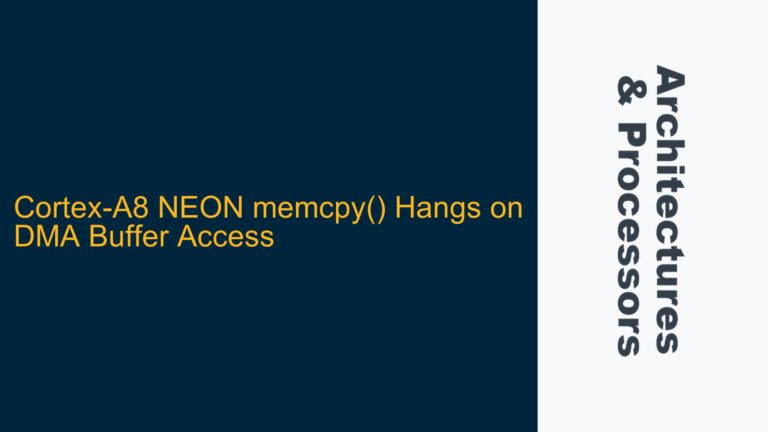ARMv8 Stage 1 Translation and XN Bit Behavior in Hierarchical Descriptors
The XN (Execute-Never) bit in ARMv8 architecture plays a critical role in memory protection by controlling whether a specific memory region can be used to fetch and execute instructions. In the context of ARMv8 Virtual Memory System Architecture (VMSA), the XN bit is present in translation table descriptors at various levels of the page table hierarchy. Understanding its behavior is essential for designing secure and efficient memory management systems.
In ARMv8, stage 1 address translation for a 4KB granule involves a multi-level page table walk: TTBR_ELx points to the Level 0 (L0) descriptor, which references the Level 1 (L1) descriptor, and so on until the Level 3 (L3) descriptor, which ultimately points to the 4KB page. Each descriptor in this hierarchy contains control bits, including the XN bit, which governs execute permissions for the corresponding memory region.
A common point of confusion arises when considering the scope of the XN bit in higher-level descriptors, such as the L0 descriptor. Specifically, the question is whether setting the XN bit in the L0 descriptor affects only the L1 descriptor lookup or if it propagates to all subsequent levels (L1, L2, and L3) and the final 4KB page. The answer lies in the hierarchical nature of the XN bit’s control, as defined in the ARM architecture.
When the XN bit is set in a higher-level descriptor (e.g., L0), it applies to the entire memory region controlled by that descriptor. For a 4KB granule, the L0 descriptor governs a 512GB region. If the XN bit is set in the L0 descriptor, the entire 512GB region is marked as non-executable, regardless of the settings in the lower-level descriptors (L1, L2, and L3). This hierarchical control ensures that execute permissions can be enforced at a coarse granularity, simplifying memory management and enhancing security.
However, this behavior does not imply that the XN bit in the L0 descriptor prevents the CPU from accessing the L1 descriptor for table walking. The L1 descriptor is part of the page table structure, not executable code. The XN bit’s purpose is to restrict instruction fetching from the memory region described by the descriptor, not to block descriptor access during the translation process. Therefore, the XN bit in the L0 descriptor does not interfere with the CPU’s ability to read the L1 descriptor for address translation.
Misconceptions About XN Bit Scope and Descriptor Access
A common misconception is that the XN bit in a higher-level descriptor (e.g., L0) affects the accessibility of the next-level descriptor (e.g., L1) during the page table walk. This misunderstanding stems from conflating the concepts of descriptor access and execute permissions. The XN bit controls whether the memory region described by the descriptor can be used to fetch instructions, not whether the descriptor itself can be accessed for translation purposes.
For example, if the XN bit is set in the L0 descriptor, it does not prevent the CPU from reading the L1 descriptor to continue the page table walk. The L1 descriptor is part of the page table structure, which is treated as data by the Memory Management Unit (MMU). The XN bit’s restriction applies only to instruction fetching from the memory region described by the descriptor, not to the descriptor’s accessibility during translation.
Another point of confusion is the interaction between the XN bit in higher-level descriptors and the execute permissions in lower-level descriptors. As mentioned earlier, the XN bit in a higher-level descriptor takes precedence over the settings in lower-level descriptors. If the XN bit is set in the L0 descriptor, the entire 512GB region is non-executable, even if the XN bit is cleared in the L1, L2, or L3 descriptors. This hierarchical enforcement ensures that execute permissions cannot be inadvertently relaxed at lower levels, providing a robust security mechanism.
It is also important to note that the XN bit’s behavior can vary depending on the translation regime and the specific ARMv8 implementation. For example, in the EL2 translation regime, the XN bit may have additional constraints or interactions with hypervisor-specific features. Similarly, some ARMv8 implementations may include optional extensions that modify the XN bit’s behavior, such as the Privileged Execute-Never (PXN) bit, which restricts execution in privileged modes.
Proper Configuration and Debugging of XN Bit in ARMv8 Translation Descriptors
To ensure correct operation and security in an ARMv8 system, it is crucial to properly configure the XN bit in translation descriptors. Misconfigurations can lead to unintended behavior, such as allowing execution from memory regions that should be non-executable or blocking execution from regions that should be executable. The following steps outline best practices for configuring and debugging the XN bit in ARMv8 translation descriptors.
First, clearly define the memory regions that should be executable and non-executable in your system. This includes identifying code sections, data sections, and any memory-mapped peripherals. Use the XN bit to enforce execute permissions at the appropriate granularity. For example, if a 512GB region should be entirely non-executable, set the XN bit in the L0 descriptor. If finer granularity is required, use the XN bit in lower-level descriptors (L1, L2, or L3).
Second, ensure that the XN bit is consistently applied across all levels of the page table hierarchy. As discussed earlier, the XN bit in a higher-level descriptor takes precedence over lower-level descriptors. Therefore, if the XN bit is set in the L0 descriptor, it is unnecessary to set it in the L1, L2, or L3 descriptors for the same region. However, if the XN bit is cleared in the L0 descriptor, you can use the XN bit in lower-level descriptors to enforce execute permissions at a finer granularity.
Third, verify the XN bit configuration during system initialization and runtime. Use debug tools to inspect the page table entries and confirm that the XN bit is set or cleared as intended. Pay particular attention to regions that transition between executable and non-executable states, as these are more prone to misconfigurations. For example, if a memory region is dynamically allocated for code execution, ensure that the XN bit is cleared before allowing execution.
Fourth, consider the interaction between the XN bit and other memory protection mechanisms, such as the Privileged Execute-Never (PXN) bit and the Domain Access Control Register (DACR). These mechanisms provide additional layers of security and can influence the effective execute permissions. For example, the PXN bit can restrict execution in privileged modes, even if the XN bit is cleared. Similarly, the DACR can override the XN bit for specific memory domains.
Finally, test the system under various scenarios to validate the XN bit’s behavior. This includes testing normal operation, exception handling, and security-critical scenarios. For example, verify that the system correctly blocks execution from non-executable regions and allows execution from executable regions. Additionally, test the system’s response to attempts to bypass the XN bit, such as modifying page table entries at runtime.
By following these steps, you can ensure that the XN bit is correctly configured and effectively enforces execute permissions in your ARMv8 system. Proper configuration and debugging of the XN bit are essential for maintaining system security and reliability, particularly in environments where memory protection is critical.
This post provides a comprehensive analysis of the XN bit’s behavior in ARMv8 translation descriptors, addressing common misconceptions and offering practical guidance for configuration and debugging. By understanding the hierarchical nature of the XN bit and its interaction with other memory protection mechanisms, developers can design secure and efficient memory management systems for ARMv8-based platforms.
